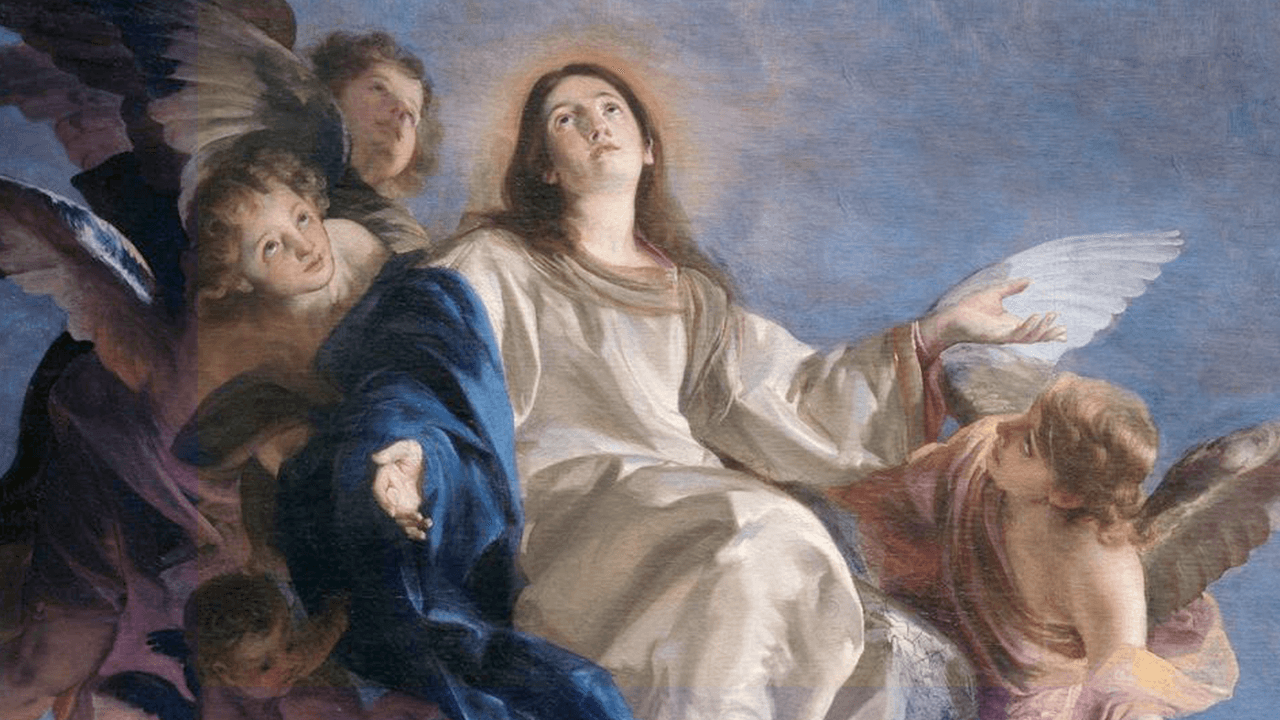The Assumption of Mary is the fourth and most recently declared Marian dogma – Church teachings about Mary that are considered essential for all practicing Catholics to believe. Proclaimed in 1950, this feast and dogma has been celebrated within early Christian circles as early as the fifth century – but some of the traditional stories imply a genesis even sooner.
Depending on which branch of Church history you follow – Armenian, Orthodox, or Roman Catholic – the Dormition and Assumption of Mary changes in its flow of events. Some accounts state that the archangel Gabriel appeared to Mary three days prior to her death, that the Apostles miraculously appeared at her side when she died, and that Thomas (the only one not present at the end of her earthly life) saw her assumed into heaven three days later. Others believe that Mary “fell asleep” – hence the use of the term “dormition” – and was assumed wholly from her rest into eternity. Still more hold that Mary’s Assumption wasn’t realized until the Council of Chalcedon, almost 300 years after the days of the first Apostles.
No matter the story around it, that the Assumption occurred, bringing Mary entirely into Heaven with her Son, is the important piece in the Catholic Church.
Years of energetic Catholics urging the Holy See, careful study and intentional, prayerful discussion preceded the declaration of the Assumption as dogma. Pope Pius XII infallibly proclaimed it as dogma in his Apostolic Constitution, Munificentissimus Deus: “The Immaculate Mother of God, the ever-virgin Mary, having completed the course of her earthly life, was assumed body and soul into heaven.”
This is great to know as a striving Catholic, but what does this mysterious event teach us about God? About His immaculate Mother? And what does it mean for us on earth? For Mary, Munificentissimus Deus has more answers:
“Now God has willed that the Blessed Virgin Mary should be exempted from [the reunion of body and soul at the end of time]. She, by an entirely unique privilege, completely overcame sin by her Immaculate Conception, and as a result she was not subject to the law of remaining in the corruption of the grave, and she did not have to wait until the end of time for the redemption of her body.”
Mary was immaculate and free from sin from her conception to the end of her earthly life – every day of her life and mission was integrally guided by God’s will and her selfless consent to Him. His grace was essential from the beginning – and, of course, from the Annunciation and Incarnation to the Cross and the Resurrection. In all He drew Mary to Himself, and the Assumption is the epitome of this relationship, laid out for us to see, to give us hope for our own glorified resurrections at the end of time.
Ultimately, as with each of the events of Mary’s life, the Assumption clearly shows us that by God’s grace all is possible – and that the guiding light for us to God is a gentle, humble, maternal hand.

Our Lady is celebrated under many names, from popular apparitions to small-town titles. Each reveal something different about the Blessed Mother to us – and affirms what we already know of her love and intercessory power! Deepen your devotion to Our Lady with Miracles, Mysteries, & Mary, a monthly collection of stories, Church teaching, reflections, and so much more – guaranteed to expand your knowledge of Our Blessed Mother. Sign up today to receive this Marian content, right to your inbox, and check out our archive page to catch up on our year of Our Lady!


